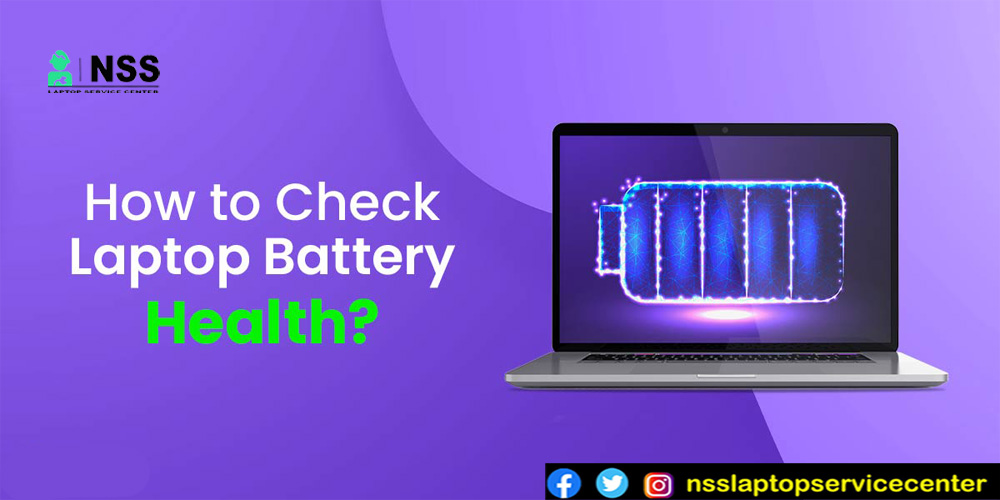
Even the battery that powers your laptop isn't intended to last forever. While it might seem that your device's power source should be the technological equivalent of a gobstopper that never runs out, laptop batteries have a life cycle that ends like any other battery.
To avoid having to replace your laptop battery in an emergency, it is crucial to monitor the condition of your laptop battery. It can and probably will die at some point. Additionally, just because the battery is dead does not necessitate the purchase of a new laptop.
What causes laptop batteries to die?
Lithium-ion batteries, the power source for most laptops, typically lose their ability to charge over time. Your laptop battery may eventually only hold 30 percent of its original charge while having originally held a full head of 100 percent due to this.
This could affect both your laptop's performance and productivity. Although notebooks are designed to be portable, their usefulness may suffer if you cannot move them from one location to another without the battery dying. View your life in numbers with this addictive website, which you may also enjoy.
This occurs due to your laptop battery's limited capacity to handle complete battery cycles or, to put it another way, the process by which your battery charges from 0 to 100 percent before it loses efficiency. Your laptop battery will lose efficiency if you put it through complete charge cycles often, just like older batteries do as they age.
Also Read: How to Uninstall Avast Antivirus in Windows 10: Step-by-step Description
Also Read: If Touchpad Not Working On MacBook

How to check your laptop's battery life
Your laptop's kind will determine the procedures you need to take to assess the health of your battery. On a MacBook, verifying the status of your storm is considerably more accessible than on a PC laptop. New ways your phone can keep you safe in an emergency is something else you might appreciate.
How to examine the condition of your PC laptop's battery
-
Use the Windows PowerShell terminal as the first option (Windows 8 or later).
-
To check the health of your battery, you only need to issue one straightforward command from the Windows Powershell interface.
-
Select Start from the laptop's menu.
-
Click the PowerShell option that appears after performing a search for it.
-
Once it does, enter the powercfg /battery report onto the command line.
-
Entering the key will produce a report with details on the condition of your battery.
-
To retrieve the report, look for the folder C: Users[YourUsername] in your user accounts directory.
Note: You can input "cmd" while pressing the Start button instead of looking for Powershell.
-
Run the program in administrator mode by pressing Ctrl + Shift + Enter.
-
Enter powercfg /battery report while in administrator mode.
-
Press Enter.
-
To access the report, navigate to UsersYour Username and look for the battery-report.html file.
Option 2: Use Battery Report to check the health of your battery (best for older laptops)
-
To access the Win + X menu, press Windows Key + X.
-
Decide on Command Prompt (Admin). (Note: By doing this, Command Prompt is opened in administrator mode, enabling you to run a battery report on your laptop.)
-
Enter the same command you use for Windows PowerShell when the Command Prompt opens: Run the report using powercfg /battery report.
Also Read: List of Apple Authorized Service Centers in Indore
Also Read: Apple Service Center Jaipur Toll-Free Number: 800-100-9009

How to examine the condition of your Mac laptop's battery
-
When compared to monitoring the battery health on a PC laptop, checking the health of your MacBook battery is surprisingly easy. For a MacBook, you can check the condition of the battery by:
-
Click on the Apple menu while holding down the Option key.
-
Then select System Information.
-
Access Hardware > Power > Cycle Count by scrolling down.
Conclusion;
I won't say much, as the blog has informed you about checking a laptop's battery health. It is an easy process, and you can use it for various purposes.
Frequently Asked Questions
Popular Services
- MacBook Battery Replacement Cost
- HP Printer Repair in Delhi NCR
- Dell Laptop Repair
- HP Laptop Repair
- Samsung Laptop Repair
- Lenovo Laptop Repair
- MacBook Repair
- Acer Laptop Repair
- Sony Vaio Laptop Repair
- Microsoft Surface Repair
- Asus Laptop Repair
- MSI Laptop Repair
- Fujitsu Laptop Repair
- Toshiba Laptop Repair
- HP Printer Repair Pune
- Microsoft Surface Battery Replacement
- Microsoft Surface Screen Replacement




